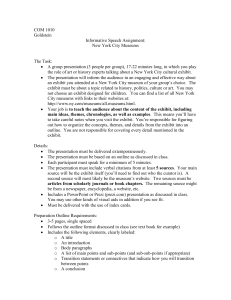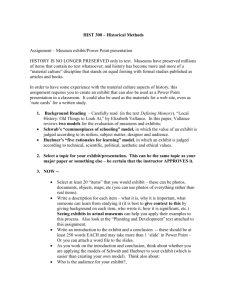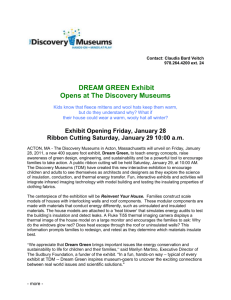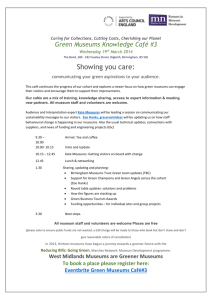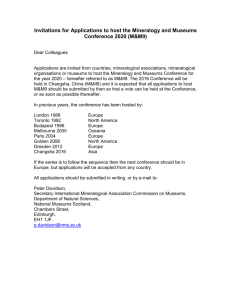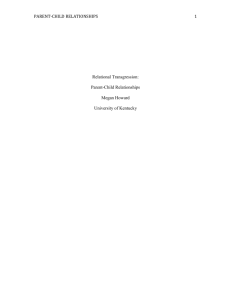Abstract When Parents Stand Back Is Family Learning Still Possible?
advertisement
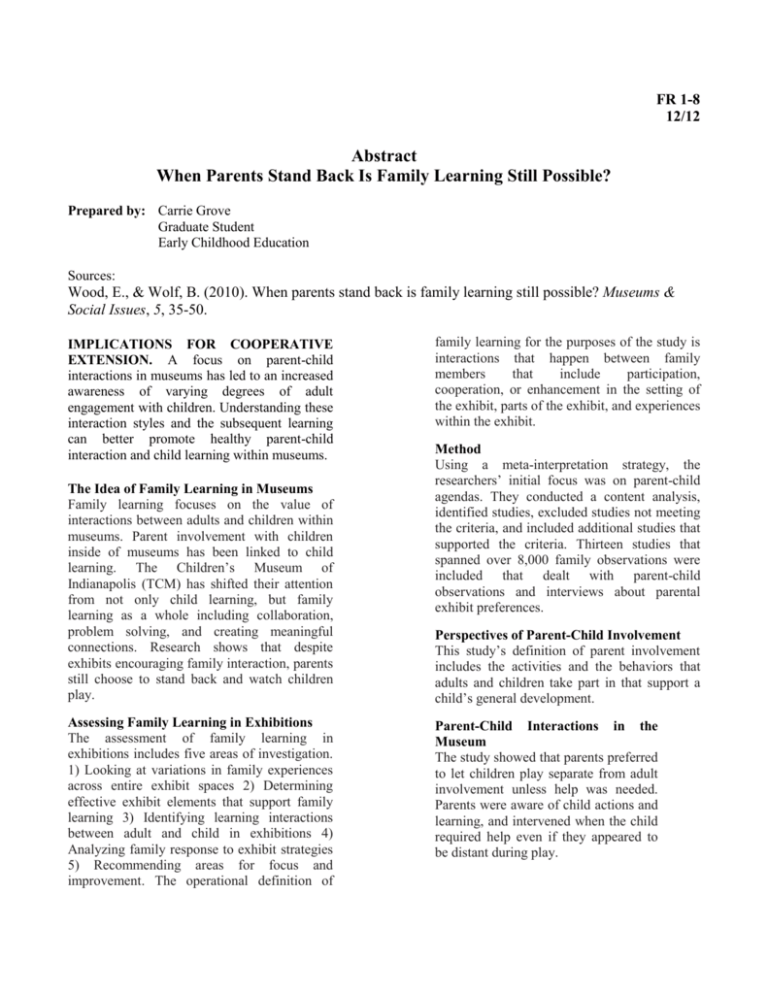
FR 1-8 12/12 Abstract When Parents Stand Back Is Family Learning Still Possible? Prepared by: Carrie Grove Graduate Student Early Childhood Education Sources: Wood, E., & Wolf, B. (2010). When parents stand back is family learning still possible? Museums & Social Issues, 5, 35-50. IMPLICATIONS FOR COOPERATIVE EXTENSION. A focus on parent-child interactions in museums has led to an increased awareness of varying degrees of adult engagement with children. Understanding these interaction styles and the subsequent learning can better promote healthy parent-child interaction and child learning within museums. The Idea of Family Learning in Museums Family learning focuses on the value of interactions between adults and children within museums. Parent involvement with children inside of museums has been linked to child learning. The Children’s Museum of Indianapolis (TCM) has shifted their attention from not only child learning, but family learning as a whole including collaboration, problem solving, and creating meaningful connections. Research shows that despite exhibits encouraging family interaction, parents still choose to stand back and watch children play. Assessing Family Learning in Exhibitions The assessment of family learning in exhibitions includes five areas of investigation. 1) Looking at variations in family experiences across entire exhibit spaces 2) Determining effective exhibit elements that support family learning 3) Identifying learning interactions between adult and child in exhibitions 4) Analyzing family response to exhibit strategies 5) Recommending areas for focus and improvement. The operational definition of family learning for the purposes of the study is interactions that happen between family members that include participation, cooperation, or enhancement in the setting of the exhibit, parts of the exhibit, and experiences within the exhibit. Method Using a meta-interpretation strategy, the researchers’ initial focus was on parent-child agendas. They conducted a content analysis, identified studies, excluded studies not meeting the criteria, and included additional studies that supported the criteria. Thirteen studies that spanned over 8,000 family observations were included that dealt with parent-child observations and interviews about parental exhibit preferences. Perspectives of Parent-Child Involvement This study’s definition of parent involvement includes the activities and the behaviors that adults and children take part in that support a child’s general development. Parent-Child Interactions in the Museum The study showed that parents preferred to let children play separate from adult involvement unless help was needed. Parents were aware of child actions and learning, and intervened when the child required help even if they appeared to be distant during play. Relating to the study, hands-off interaction styles between adults and children in museums was typically indicative of recognition of opportunities for independent hands-on child learning. Family interaction was also found to be inversely correlated with the frequency of exhibit visits. Three patterns of adult behavior were found in the study: adults who observed from a neutral position, following the child’s overall attentiveness to the activity; adults who observed from a neutral position to note child understanding; and adults who observed from a managerial role to control and terminate play. Parent-Child Interactions In and Out of School Higher levels of parent involvement lead to the development of features of children’s accomplishment. Involvement comes from invitations by the child, climate of the organization, and main organizers of the experience. Parents make decisions about their actions to mediate behaviors, use resources to promote collaboration, or use spaces to supplement their children’s learning experience. Next Steps For Evaluating Parent Involvement Improvement of data collection for family behaviors and repeat exhibit visits will help to create exhibits that promote family learning. Standing back and watching a child play should not automatically be categorized as nonengagement, because parents often are assessing the level of interaction needed or promoting independence for problem solving. Motivation and parent choice for interaction must be further studied to fully understand family learning in museums.
